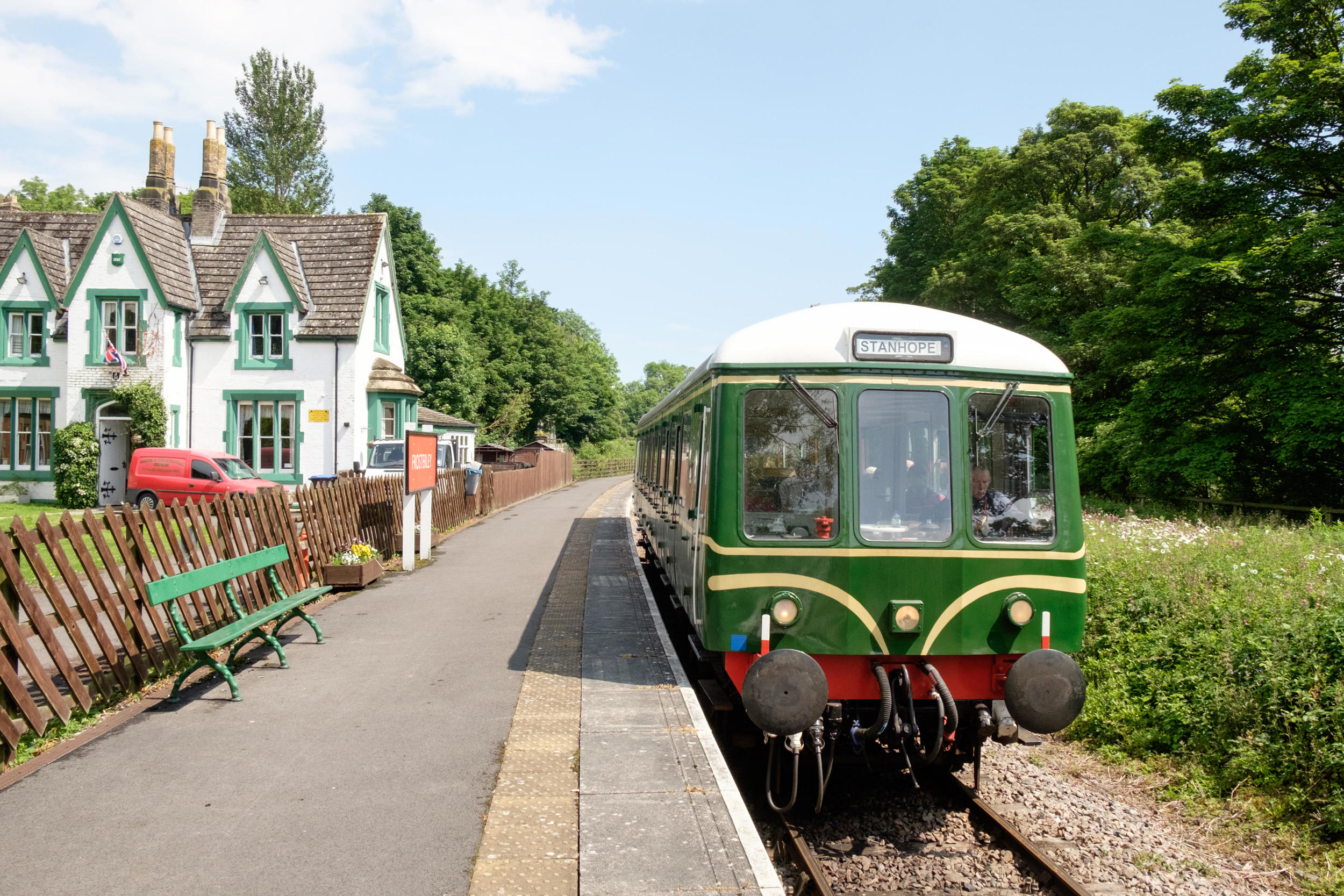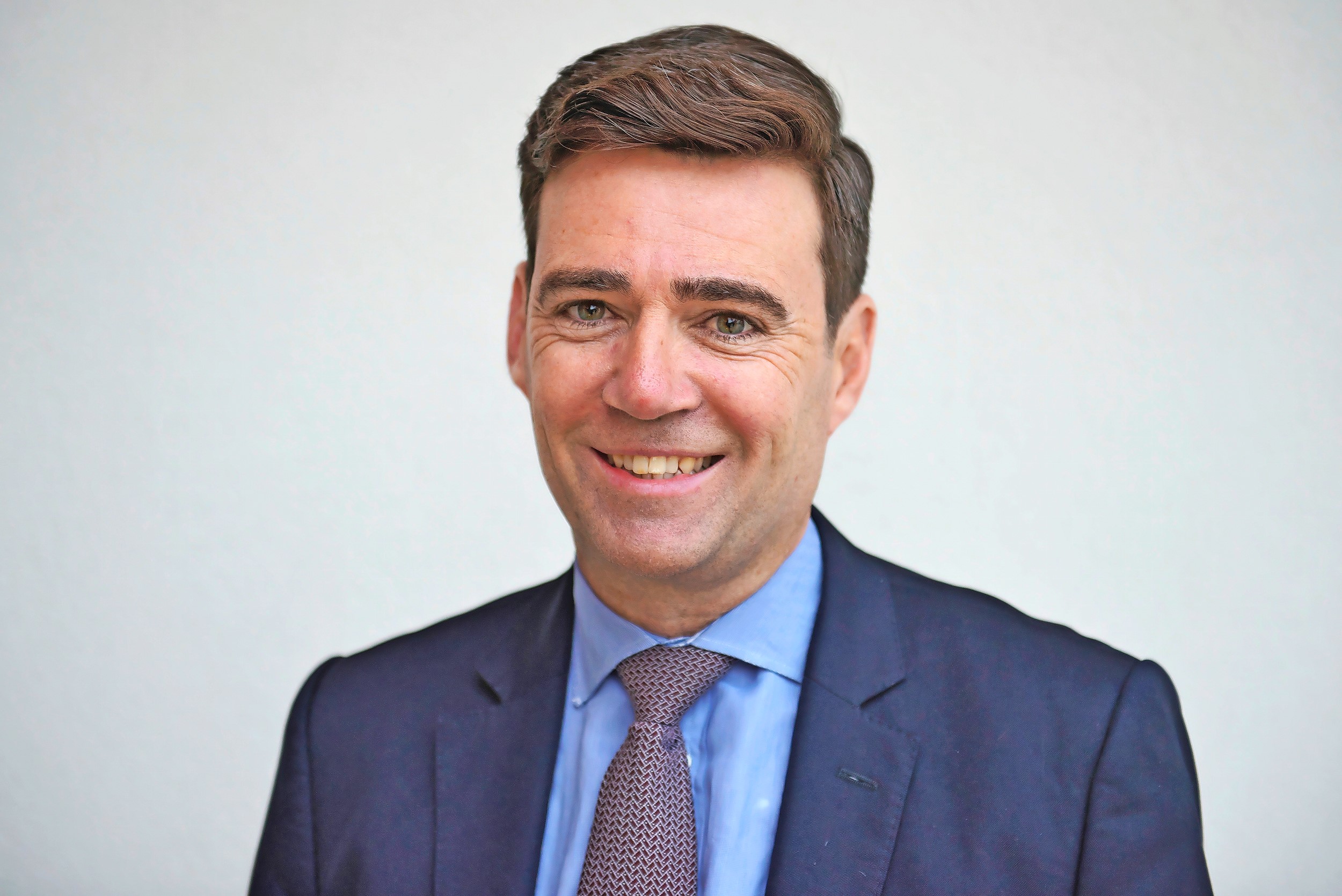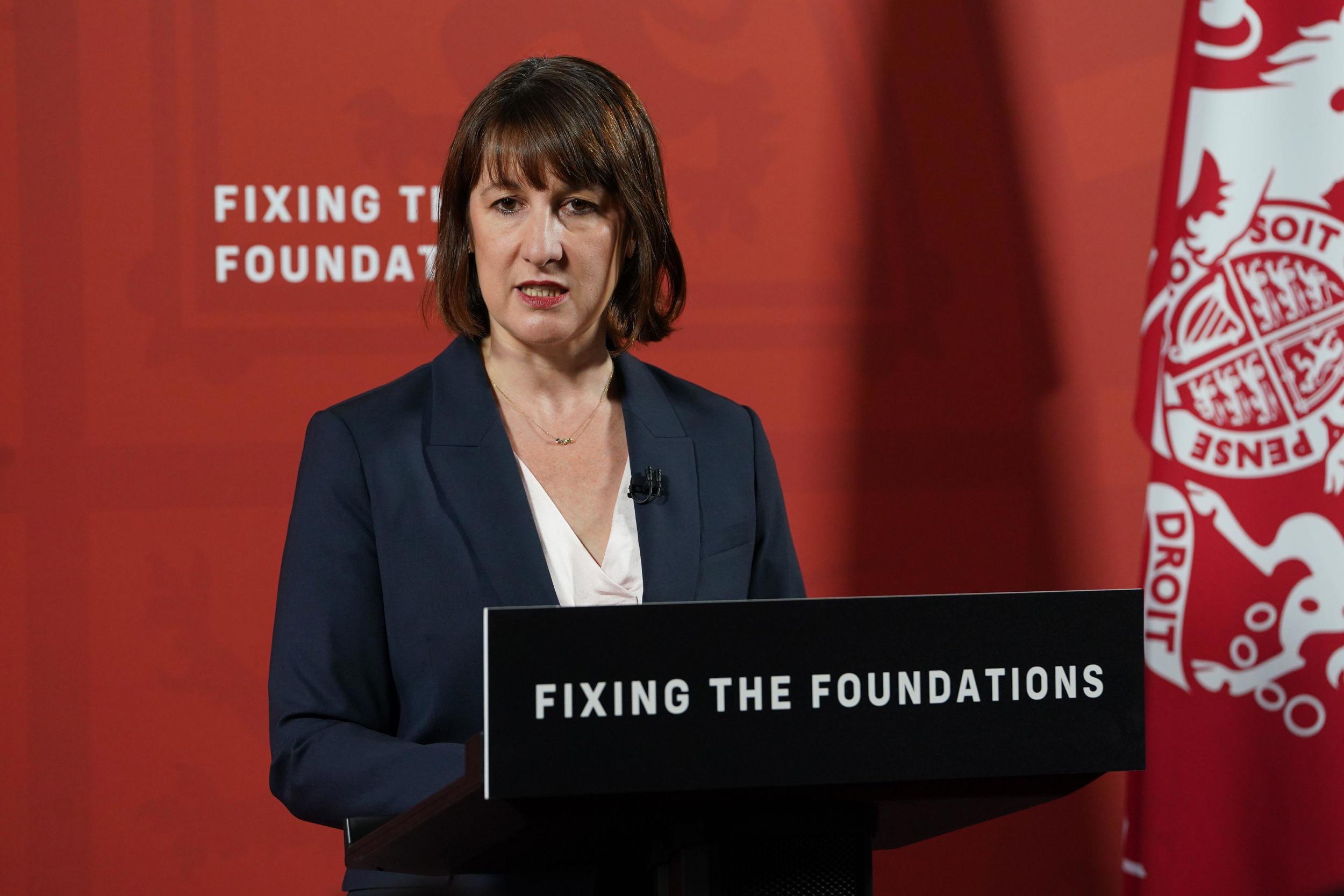
A train at the platform of Frosterley Station, on the Weardale Railway heritage branch line in County Durham, England, UK. ALAMY

A train at the platform of Frosterley Station, on the Weardale Railway heritage branch line in County Durham, England, UK. ALAMY
Restoring Your Railway has been killed off in the first month of the new Labour government.
But was it ever really alive?
Chancellor Rachel Reeves’ House of Commons statement on July 29 that putting RYR out of its misery would save £76 million confirmed to us how insignificant and grossly underfunded it was in the first place.
Including road projects, Reeves claims that £1 billion of transport works that were initiated by the Conservatives are unfunded.
She said that making false promises has to stop.
What is much more worrying is the clear message that railways are once again an easy target for political panic.
Mythical £500m money pot
Regional and county planners who were whipped up into a frenzy four years ago to make their bids for RYR’s mythical £500m money pot must now put their grand schemes back in the cupboard for perhaps another decade.
What Reeves and the Department for Transport must recognise is the existence of a deep-seated national enthusiasm for a rail revival.
The RYR scrutineers admitted they were taken by surprise when no fewer than 160 serious bids were made for the small sums available to initiate research into their relevance and viability.
The DfT never envisaged RYR as the gateway to a large-scale rail revival, which would cost many billions.
Chris Heaton-Harris, the Rail Minister back in 2020, privately indicated that those submitting some great ideas were effectively gate-crashing the wrong party, but that the DfT might be able to advise all the losers on other sources for kick-start funding.
It also became evident that Heaton-Harris’s boss, former Conservative Transport Secretary (and now ex-MP) Grant Shapps, wallowed in window-dressing and was more often than not unable to deliver the goods.
Shapps claimed personal credit for Great British Railways, although this much-delayed magnum opus is actually the work of a skilled team chaired by Keith Williams, and is now only coming to fruition under his political opponents.
It has taken six years so far.
Uckfield-Lewes, Skipton-Colne, Matlock-Buxton, and March-Wisbech
Going forward, the July 29 announcement had some positive undertones, stating that Transport Secretary Louise Haigh is charged with taking railway development forward in a sensible fashion.
Funds permitting, this should now include schemes that do actually make some sense.
Which takes us back to regular door-knockers such as Uckfield-Lewes, Skipton-Colne, Matlock-Buxton, and March-Wisbech.
Most were conspicuously absent from RYR because the case for reopening is well-stated.
However, we all failed to understand why the revival of the Plymouth-Bere Alston-Tavistock route needed a RYR grant, when it had already been the subject of an exhaustive 117-page Devon County Council study in 2014 that just requires minor updating.
How safe is Sunak's £36bn?
But having now buried RYR, there are several far more serious and compelling challenges facing our railways.
The first is: how will the major investment plans fare in Chancellor Rachel Reeves’ October 30 Budget Statement?
Will they survive further cuts to national spending that we are being told to expect?
How safe is the £36bn that former Prime Minister Rishi Sunak promised from the cancellation of the northern leg of HS2?
He pledged that it would be redirected into infrastructure improvements, both rail and road, but will Labour honour this?
It isn’t real money, of course, because it hasn’t been spent.

But Reeves may well decide that some of it would come in very nicely for settling public sector pay demands, building those desperately needed new hospitals, and easing pressure on our overcrowded prisons.
Never mind realising the dream of electrification along the North Wales coast, or gauge enhancement for freight containers from the Port of Felixstowe to the West Coast Main Line.
Will West Yorkshire’s elected Mayor Tracey Brabin have to duck for cover, after declaring her ambition to be re-elected in 2028 on the back of delivering the first stage of her £2bn Leeds-Bradford light rail system?
How will Greater Manchester Mayor Andy Burnham (pictured above) get his money to take over suburban rail services to complete his Bee network?
Will London Mayor Sadiq Khan get anywhere with his takeover of some services south of the Thames when Southeastern’s ‘last resort’ franchise expires?
All of them have recently met new Prime Minister Sir Keir Starmer at No. 10 Downing Street.
And none of them have given any public indication that they will be disappointed.
Lack of rail capacity
The second prime concern is how much power Louise Haigh can actually wield to get worthwhile railway expansion over the line.
The railway’s key role in regenerating our cities does not need further discussion here, except that the National Infrastructure Commission has recently made it very clear that a lack of rail capacity is at risk of holding back growth in key locations.
Local and regional authorities will demand clarity before they commit more time and resource into producing long-term plans that incorporate railway schemes into the development of their local economies.
The Midlands Rail Hub and Northern Powerhouse Rail, for example, which are all about the common-sense speeding up of journeys between poorly connected major cities, are far too precious to be binned at a whim.
Another urgent and fundamental issue is to change the mindset of HM Treasury and the DfT, which must stop continually ranting on about rail passenger patronage not recovering well or fast enough from the COVID-19 pandemic four years ago. Give it a chance.
It is also patently not true in some cases, with statistics from the Office of Rail and Road encouraging us to be quite optimistic.
Passionate, open and honest

A final word about RYR.
Initial reaction about its demise has been mixed.
At one end of the spectrum, Chancellor Rachel Reeves (pictured above) has been variously labelled by pro-rail campaigners as “the daughter that Dr Beeching never had” and “a visionless destructor pouring paraquat on the green shoots of growth”.
But in her first month, Reeves has come across as being passionate, open and honest.
She knows that the UK is already labelled as a poor relation of Europe when it comes to investment in capital projects - and that’s not just railways.
Some world economists will argue strongly that is quite acceptable to borrow to invest, instead of just pulling in our horns every time a chilly wind blows.
Login to continue reading
Or register with RAIL to keep up-to-date with the latest news, insight and opinion.


















Login to comment
Comments
No comments have been made yet.